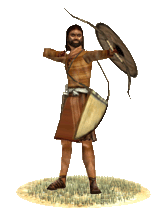Ha, are you kidding? Of course people are still following. People fear following an aar that just began, because you know, most aars end shortly. Yours has over 700 comments and 35000+ views? People are still following this EPICNESS (for lack of a better word).
... now get to work.








 Reply With Quote
Reply With Quote


























 7x
7x












































 Hopefully those democrats won't get too much power.
Hopefully those democrats won't get too much power. 




Bookmarks